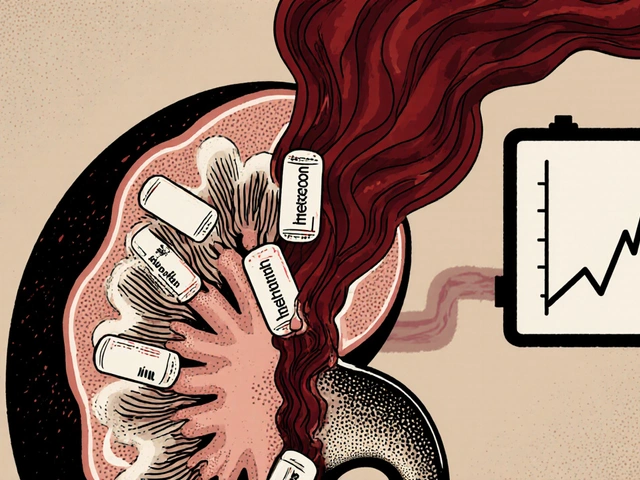Lurasidone (Latuda): Uses, Side Effects, and Practical Tips
Looking for clear info on lurasidone? This short guide explains what lurasidone (brand name Latuda) does, who it helps, common side effects, and real-world tips you can use when talking to your doctor.
How lurasidone is used
Lurasidone is an atypical antipsychotic most often prescribed for schizophrenia and the depressive episodes of bipolar I disorder. Doctors choose it because it can help reduce hallucinations, delusions, and mood symptoms without some of the heavy sedation seen with older drugs. Typical starting doses vary—often 20–40 mg once daily—but your doctor will pick the dose based on your symptoms, age, and other meds you take.
Take lurasidone with food (at least 350 calories). Food increases how much of the drug gets into your system. Skipping the meal or taking it on an empty stomach can make the dose less effective.
Side effects, interactions, and safety tips
Common side effects include nausea, drowsiness, restlessness (akathisia), and sometimes weight changes. Some people notice shakiness or muscle stiffness. Most side effects show up in the first few weeks and may ease over time. If side effects are severe or sudden—like trouble breathing, fainting, or irregular heartbeat—seek medical help right away.
Lurasidone can interact with other medicines. Drugs that affect liver enzymes (CYP3A4 inhibitors like ketoconazole) can raise lurasidone levels and increase side effects. Strong CYP3A4 inducers (like rifampin) can make it less effective. Tell your doctor about all prescriptions, OTC meds, and supplements you use.
Watch for metabolic changes. Some antipsychotics raise blood sugar or lipids. Your clinician may check weight, blood sugar, and cholesterol before and during treatment. If you have diabetes, heart disease, or a history of stroke, mention that—treatment plans may change.
Older adults with dementia-related psychosis have a higher risk of death on antipsychotics. Lurasidone is not approved for that use. If you care for an older person with dementia, ask the prescriber about safer alternatives.
Missed doses: take the next scheduled dose. Don’t double up. Stopping suddenly can worsen symptoms; if you want to stop, plan a taper with your doctor.
Practical tips: keep a side-effect diary for the first month, bring a medication list to appointments, and set a routine to take the pill with a meal. If nausea is a problem, try dividing food or using bland carbs that meet the calorie need.
Questions to ask your prescriber: Why is lurasidone the best option for me? What dose will you start with and why? Which side effects should I expect and when should I call? How will we monitor metabolic health?
If you need more details or a printable checklist to take to your appointment, talk to your pharmacist or clinician. Lurasidone can help, but clear communication and monitoring make it work safer and better for you.

As a blogger, I recently came across the topic of Lurasidone and alcohol, and whether it's a dangerous combination. Lurasidone is an antipsychotic medication often prescribed for treating mental health disorders, such as bipolar disorder and schizophrenia. From my research, I've found that mixing Lurasidone with alcohol can lead to potentially serious side effects, including drowsiness, dizziness, and impaired judgement. It's crucial for those taking Lurasidone to avoid alcohol consumption in order to maintain their overall health and safety. If you or someone you know is on this medication, it's essential to speak with a healthcare professional about any concerns regarding alcohol use.
Continue Reading





